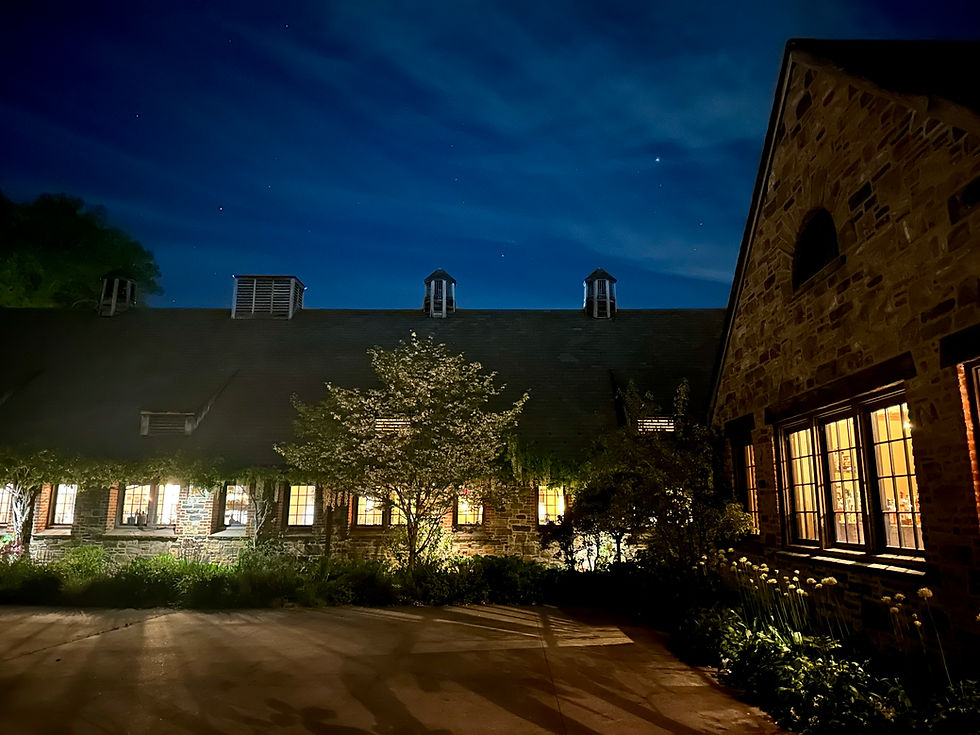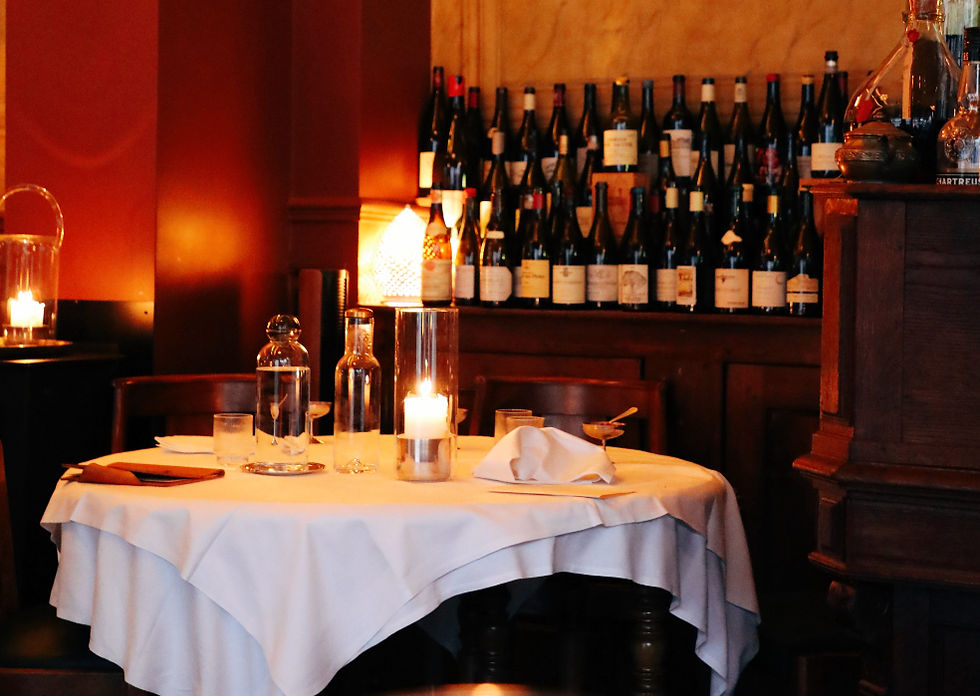Blue Hill at Stone Barns 5/7/2025
- Zoey Zong
- May 7
- 2 min read
Updated: May 9
A 45-kilometer journey from Manhattan—first a train ride, then a taxi winding through the countryside—Blue Hill at Stone Barns is less a restaurant than a pilgrimage. By the time we arrive, we’ve already left the city far behind. We step out of the car and greedily inhale the fresh and clean air, surrounded by an ocean of trees.

The farming manual and the original handwritten menu

From the moment the Knotweed Spritz is placed, it’s clear this isn’t a conventional dinner. There’s no printed menu, no predictable sequencing of courses.

Instead, dish after dish arrives as a snapshot of the farm’s moment in time: Spring Radishes and Magnolia Yogurt, a literal bouquet of vegetables dubbed Flower Delivery, and playful bites like Deviled Turnips and Quail Eggs. The opening courses lean heavily on the garden’s bounty—carrots, radishes, turnips—making it, at least initially, a haven for vegetarians.
But calling Blue Hill simply “farm-to-table” feels reductive. These days, any restaurant can claim that label just by name-dropping a local supplier. Here, the philosophy runs deeper—rooted, quite literally, in the soil. Chef Dan Barber isn’t content to simply source produce; he’s intimately involved in the entire lifecycle of what ends up on the plate. Last Year’s Preserves is a dish as much about time and stewardship as it is about flavor. Rebellion Corn Fritos, made from a rebellious varietal of corn saved from extinction, taste even better when you know their story.

That sense of storytelling permeates the meal. White Asparagus with 12-year root in a Haystack is presented nestled in the very hay that once nourished it.

Retired Dairy Cow Bresaola and Waste-Fed Pork Saucisson Sec challenges diners to rethink what parts of the food system are considered “waste.”

Even the bread—100% Whole Wheat, served with Stone Barns Butter and Ricotta—feels like a culmination rather than an afterthought. Not every dish is conventionally delicious. Some skew more intellectual than indulgent. The Red Cabbage and Stone Barns Pork Liver was divisive at our table; the Asparagus Crown Tea invited more contemplation than outright pleasure. But that’s part of the charm: a meal at Blue Hill is as much about learning as it is about eating. And while not every course will make you swoon, none are forgettable.

The experience crescendos with richer, heartier flavors: Pasture-Raised Lamb, Montauk Blackfish and Sweet Garleek, Murasaki Sweet Potato and Its Leaves.

Dessert nods back to the farm: Hugh and Lisa’s Blueberries, Last of the Hudson Valley Apples, and delicate Honey Truffles that evoke the essence of the season’s end.

Dining here requires openness. It’s not about chasing the most delicious bite but about understanding the deep interconnection between the land, the farmer, and the table. Is it flawless? No. But how many restaurants can offer an experience this immersive, this grounded in place? Blue Hill at Stone Barns doesn’t just feed you—it invites you into an ongoing conversation about food, sustainability, and the future of agriculture.







Comments